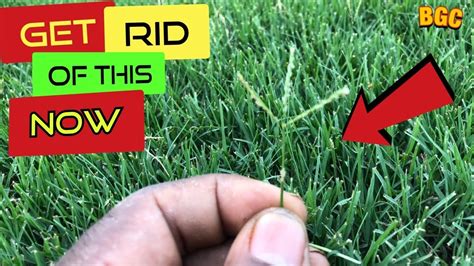How To Grow Bermuda Grass Seed
Ronan Farrow
Mar 24, 2025 · 3 min read

Table of Contents
How to Grow Bermuda Grass Seed: A Comprehensive Guide
Bermuda grass is a popular choice for lawns due to its durability, heat tolerance, and attractive appearance. However, successfully growing Bermuda grass from seed requires careful planning and execution. This comprehensive guide will walk you through each step, ensuring a lush, green lawn in your backyard.
Preparing the Soil: The Foundation for Success
Before even thinking about planting, soil preparation is paramount. Bermuda grass thrives in well-drained, slightly acidic soil (pH 6.0-6.5). Follow these steps for optimal results:
1. Soil Testing: Know Your Ground
Conduct a soil test to determine its pH and nutrient levels. This will help you amend the soil accordingly, ensuring your Bermuda grass has the best possible start. Knowing your soil's composition helps you choose the right fertilizer later on.
2. Removing Debris and Weeds: A Clean Slate
Clear the area of any existing vegetation, rocks, and debris. Thoroughly remove weeds, as they will compete with your Bermuda grass seedlings for resources. A weed-free area ensures successful germination and establishment.
3. Till the Soil: Creating the Perfect Bed
Till the soil to a depth of 6-8 inches to break up compacted soil and improve drainage. This allows the roots of the Bermuda grass to penetrate deeply and access essential nutrients and moisture.
4. Soil Amendment: Enriching the Ground
Amend the soil with organic matter, such as compost or well-rotted manure. This improves soil structure, aeration, and water retention. Organic matter also adds essential nutrients for healthy growth.
Sowing Bermuda Grass Seed: Timing and Technique
The success of your Bermuda grass lawn hinges on proper seeding techniques:
1. Timing is Everything: The Optimal Season
The best time to sow Bermuda grass seed is in spring or early summer, after the last frost and when soil temperatures are consistently above 70°F (21°C). Warmer temperatures promote faster germination and growth.
2. Seeding Depth: Getting it Right
Sow the seed at a depth of ¼ inch. Planting too deep can hinder germination; too shallow will expose seeds to harsh environmental conditions. Use a spreader or broadcast seeder for even distribution.
3. Seed Rate: Achieving Optimal Density
Follow the recommended seeding rate on your seed packet. This ensures adequate coverage and prevents thin patches. Over-seeding isn't always better, and can actually lead to competition and weak growth.
4. Watering After Seeding: Gentle Nurturing
After sowing the seed, gently water the area to moisten the soil but avoid washing away the seed. Maintain consistent moisture through regular watering, particularly during dry spells. Avoid overwatering which can lead to fungal growth.
Post-Seeding Care: Nurturing Your Lawn
Consistent care is critical for healthy growth:
1. Watering: Regular and Consistent
Keep the soil consistently moist, but not waterlogged. The frequency will depend on your climate and soil type. Water deeply and less frequently rather than shallowly and often.
2. Fertilizing: Nourishing Your Grass
Apply a balanced fertilizer appropriate for Bermuda grass once the seedlings are established. Follow the fertilizer's instructions for application rates. Regular fertilization supports vigorous growth and a vibrant green color.
3. Weed Control: Preventing Competition
Monitor for weeds and remove them promptly. Pre-emergent herbicides can be helpful in preventing weed growth. However, be careful to choose a herbicide that is safe for Bermuda grass.
4. Mowing: Maintaining the Perfect Height
Once the grass reaches a height of 4-6 inches, begin mowing. Maintain a consistent mowing height of 1-2 inches to encourage thick growth and prevent weed encroachment. Sharp blades are essential to minimize stress on the grass.
Troubleshooting Common Issues
Even with careful planning, problems can arise:
- Thin Stands: This often indicates insufficient seeding, improper soil preparation, or inadequate watering.
- Weed Infestation: Address weeds promptly through manual removal or herbicide application (careful selection is critical).
- Disease or Pests: Look for signs of disease or insect infestation, and take appropriate action.
By following these steps, you'll be well on your way to a beautiful and healthy Bermuda grass lawn. Remember patience and consistency are key to success.
Featured Posts
Also read the following articles
| Article Title | Date |
|---|---|
| How To Disable Torque Converter Lock Up | Mar 24, 2025 |
| How To Clean Powder Coated Wheels | Mar 24, 2025 |
| How To Clean Fish Tank After Fish Dies | Mar 24, 2025 |
| How To Cook Frozen Asparagus On The Stove | Mar 24, 2025 |
| How To Clean Nickel Plated Guns | Mar 24, 2025 |
Latest Posts
-
How Long Can You Keep An Urn At Home
Apr 05, 2025
-
How Long Can You Keep A Plasma Ball On
Apr 05, 2025
-
How Long Can You Keep A Brisket In A Cooler
Apr 05, 2025
-
How Long Can You Go Without A Dental Cleaning
Apr 05, 2025
-
How Long Can You Go With A Chipped Filling
Apr 05, 2025
Thank you for visiting our website which covers about How To Grow Bermuda Grass Seed . We hope the information provided has been useful to you. Feel free to contact us if you have any questions or need further assistance. See you next time and don't miss to bookmark.
